California’s snowpack is melting faster than ever before, leaving less available water – “The threats to the state’s water supply are imminent”
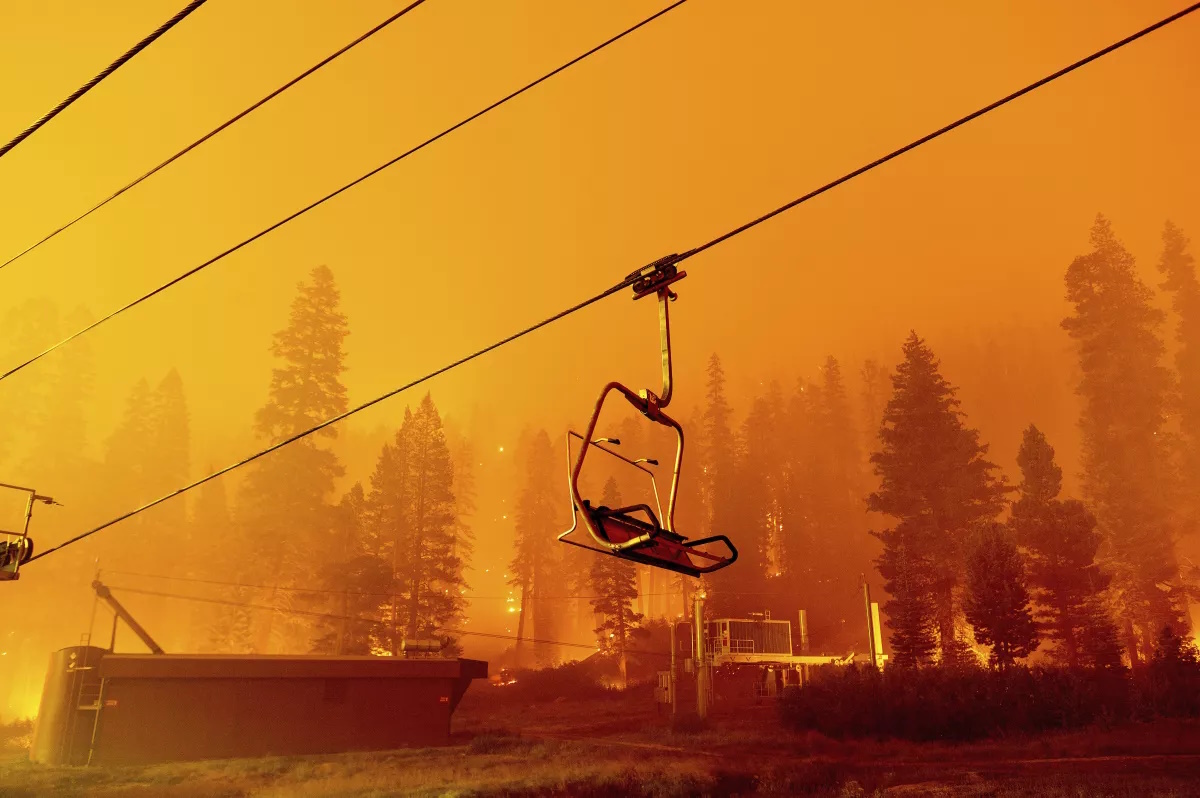
By Hayley Smith
14 February 2023
(Los Angeles Times) – For decades, Californians have depended on the reliable appearance of spring and summer snowmelt to provide nearly a third of the state’s supply of water. But as the state gets drier, and as wildfires climb to ever-higher elevations, that precious snow is melting faster and earlier than in years past — even in the middle of winter.
That’s posing a threat to the timing and availability of water in California, according to authors of a recent study in the journal Geophysical Research Letters, which found that the effects of climate change are compounding to accelerate snowpack decline.
“As wildfires become larger, burn at higher severities, and in more snow-prone regions like the Sierra Nevada, the threats to the state’s water supply are imminent,” said Erica Siirila-Woodburn, a research scientist with the Lawrence Berkeley National Laboratory and one of the authors of the study.
The timing of snowmelt is critical in California because it typically provides water in hot, dry months when precipitation is low and demand is high, Siirila-Woodburn said. “So, if snow melts earlier in the year, then there is a further disconnect between that supply and demand, potentially causing water scarcity issues.”
There are several systems at work to create this unwanted effect, including climate change, forest management practices and worsening drought and wildfires. In 2020 and 2021, the state saw a nearly tenfold increase in wildfire activity in snowy places compared with the years 2001-19, according to the study.
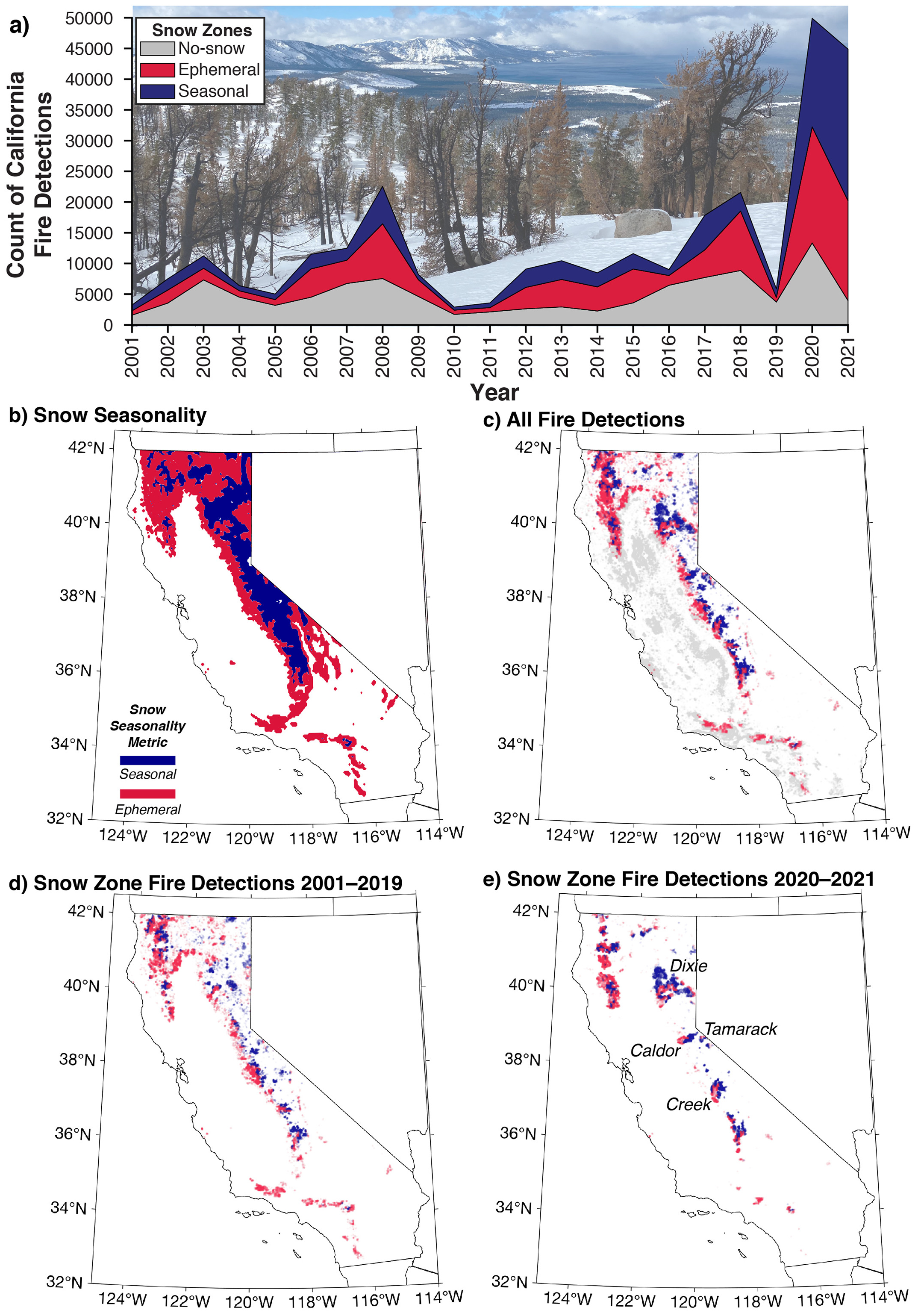
The burn scars of those fires are increasingly meeting with midwinter droughts, or periods when rain and snow stop falling in the midst of the state’s wet season. Last year, for example, a wet December gave way to the state’s driest January through March on record.
That in effect shifts the “melt season” into the middle of winter, said Benjamin Hatchett, an assistant research professor at the Desert Research Institute and one of the study’s lead authors. It also has the potential to turn mountain snow from a resource into a hazard.
“We’re going to be getting a lot more water potentially earlier in the season, so it’ll put [us] out of the phase when we want that water and when we need it, and when it’s actually coming out of the mountains,” he said.
The Caldor fire, which seared through 222,000 acres near South Lake Tahoe in the fall of 2021, is a perfect example of the effect. When snow fell onto the fire’s burn scar that winter, it was exposed to more sunlight due to the lack of tree canopy. Charred vegetation from the fire also mixed with the snow to lower its reflectivity. As a result, the snow melted much faster than during a comparable midwinter dry spell in 2013.
In fact, the study found that the reflectivity of snow — also known as albedo — declined as much as 71% when it fell onto burned areas, leading to fewer snow-covered days. The enhanced snowmelt was so pronounced within the Caldor fire burn scar that researchers recorded 50 fewer days with snow cover that winter, the lowest number of snow cover days on record in the area.
“We have a lot more area that’s now exposed to these potential dry periods and post-fire environments that can lead to melting of the snow,” Hatchett said. “So we should start thinking about how we are going to deal with this, because we expect more dry periods in a warmer climate and we expect more fire in the mountains, so it’s giving us reasons to think about how were manage our forests, how we manage our water resources.”
Indeed, earlier-than-usual snowmelt can lead to a “whole chain of cascading impacts” in addition to reduced water availability, he said, including reduced resources for hydropower and negative effects on fish species.
One of the researchers’ key recommendations is that water managers factor the effects of wildfires on snowmelt into their short- and long-term planning, as the effects are unlikely to reverse any time soon.
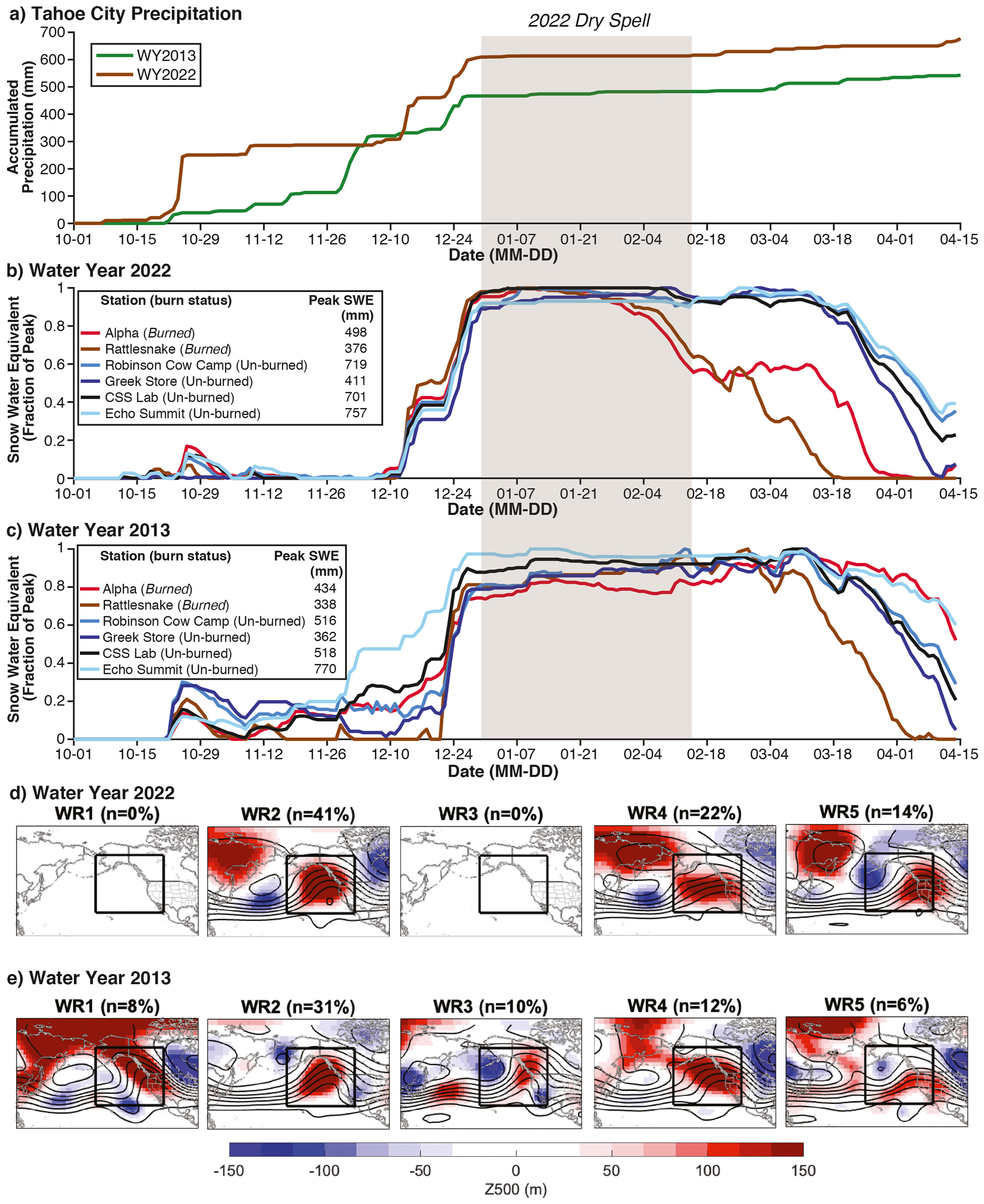
The study joins a growing body of work that examines the ways in which climate change is upending long-held relationships among wildfire, water, and drought in California. The state’s blazes are climbing to ever-higher elevations and increasing the chances of hazardous runoff, while drought is making the prospect of a “no-snow” winter more likely within the coming decades.
John Abatzoglou, an associate professor of climatology at UC Merced, who did not work on the study, said some of the findings “suggest that we might have to retool how we translate midwinter snowpack into spring melt, runoff and water availability.”
Abatzoglou in 2021 published a study that found that climate warming has exposed an additional 31,400 square miles of U.S. forests to fires at higher elevations. That study also found that between 1984 and 2017, fires in the Sierra Nevada advanced in elevation by more than 1,400 feet.
He said the effect of lower albedo in midwinter could make the snowmelt more vulnerable to “rain on snow events” and create challenges for reservoir management. Less water in mountain snowpack is compounding observed warming trends and highlighting the “importance of the water shortage problem that the state faces,” he said. […]
Kristen Guirguis, an associate project scientist at Scripps Institution of Oceanography and another of the study’s authors, said the findings build on previous research about “weather whiplash,” or worsening climate extremes in California. Research has found that the characteristics of California’s precipitation are changing, and the frequency of dry days is increasing, she said.
The latest paper “is the first time I’ve seen it quantified that having a fire changed the properties of the snow and the snow environment in a way that made snowmelt accelerate,” she said.
“It was a pretty strong signal — you can clearly see the acceleration of snowmelt in those fire-impacted regions,” she said. [more]
California’s snowpack is melting faster than ever before, leaving less available water

Midwinter Dry Spells Amplify Post-Fire Snowpack Decline
ABSTRACT: Increasing wildfire and declining snowpacks in mountain regions threaten water availability. We combine satellite-based fire detections with snow seasonality classifications to examine fire activity in California’s seasonal and ephemeral snow zones. We find a nearly tenfold increase in fire activity during 2020–2021 versus 2001–2019. Accumulation season broadband snow albedo declined 25%–71% at two burned sites (2021 and 2022) according to in-situ data relative to un-burned conditions, with greater declines associated with increased burn severity. By enhancing snowpack susceptibility to melt, both decreased snow albedo and canopy drove midwinter melt during a multi-week dry spell in 2022. Despite similar meteorological conditions in December–February 2013 and 2022–linked to persistent high pressure weather regimes–minimal melt occurred in 2013. Post-fire snowpack differences are confirmed with satellite measurements. With growing geographical overlap between wildfire and snow, our findings suggest California’s snowpack is increasingly vulnerable to the compounding effects of dry spells and wildfire.
Key Points
- A 9.8x increase in satellite fire detections in California’s snow zones in 2020–2021 versus 2001–2019 implies growing overlap in fire and snow
- Post-fire accumulation season broadband snow albedo declined 25%–71%, driving fewer snow-covered days and lower snow-cover fraction
- Compared with the meteorologically similar 2013 dry spell, albedo and canopy declines led to rapid midwinter melt in 2022
Plain Language Summary
Satellite fire detections indicate substantial increases in wildfire activity in California’s snow-covered landscapes during 2020 and 2021, suggesting wildfire is increasingly altering mountain hydrology. During 2022, a multi-week mid-winter drought, or dry spell, occurred. A meteorologically-similar dry spell occurred in 2013, and the 2022 event provides a test case to examine how post-fire changes (canopy loss and deposition of burned dark material on snowpack) alter snowmelt patterns. Using field observations, weather station data, and satellite remote sensing of snow, we find large reductions in snow albedo and canopy cover drove rapid melt during the 2022 dry spell in burned areas whereas during 2013, minimal melt occurred. The societal connection between mountains and humans will be strained as mountains face increasing climate-related stressors. Midwinter drought, snow loss, and increasing wildfire are expectations of a warming world. Addressing these challenges requires innovative water and forest management paradigms. Our findings motivate additional research into assessing and planning for post-fire hydrologic changes in snow-dominated landscapes as both wildfire and dry spells will increase in frequency with climate warming.
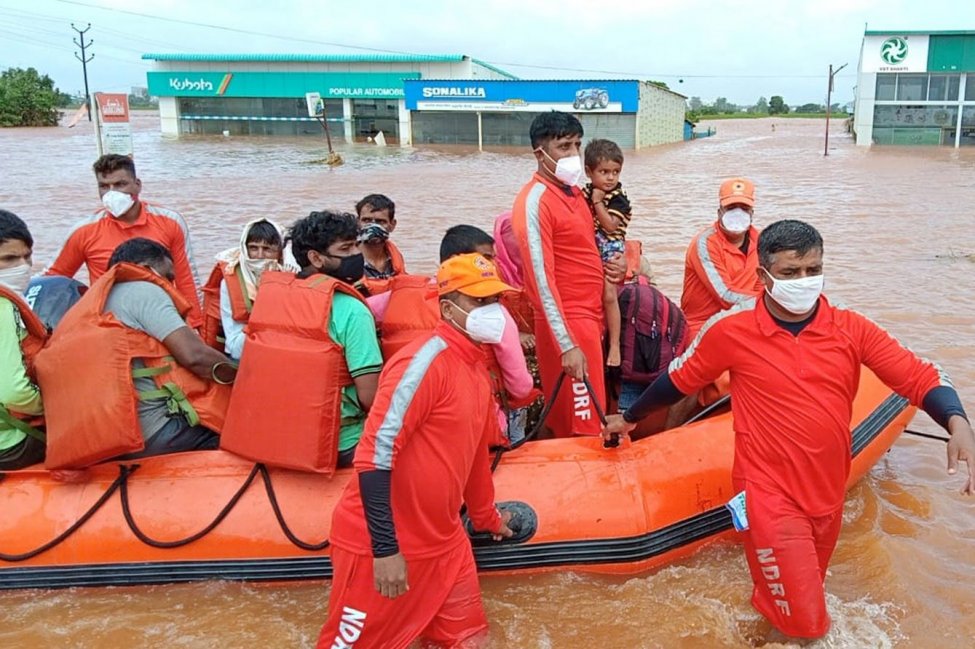
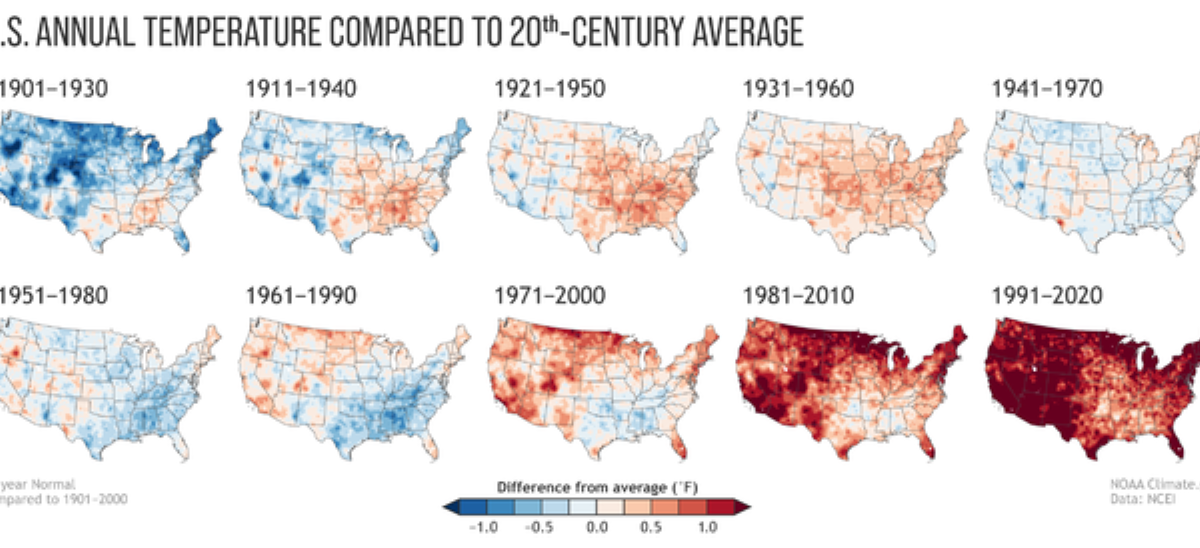
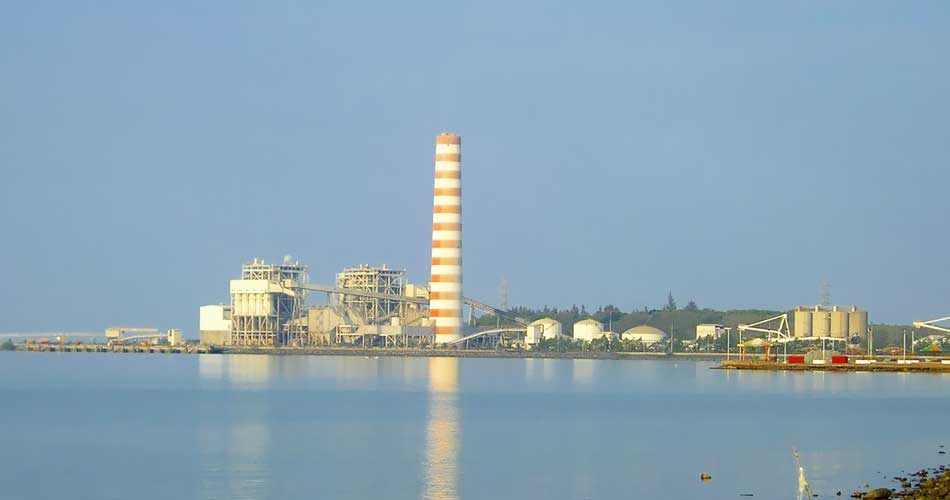
One Response
Comments are closed.